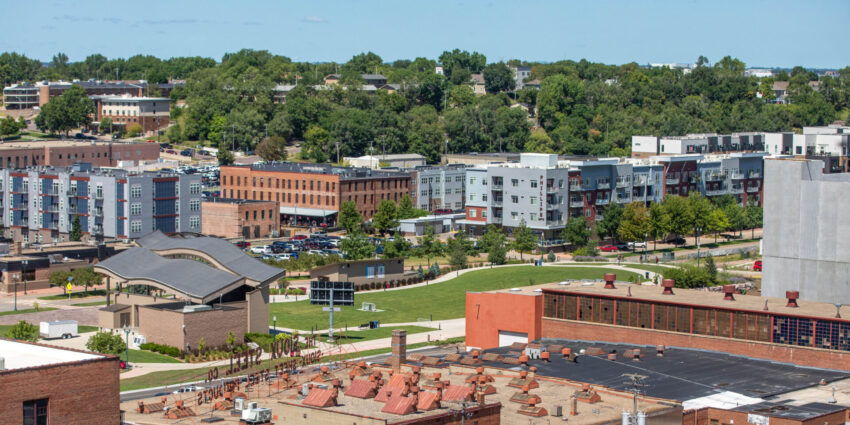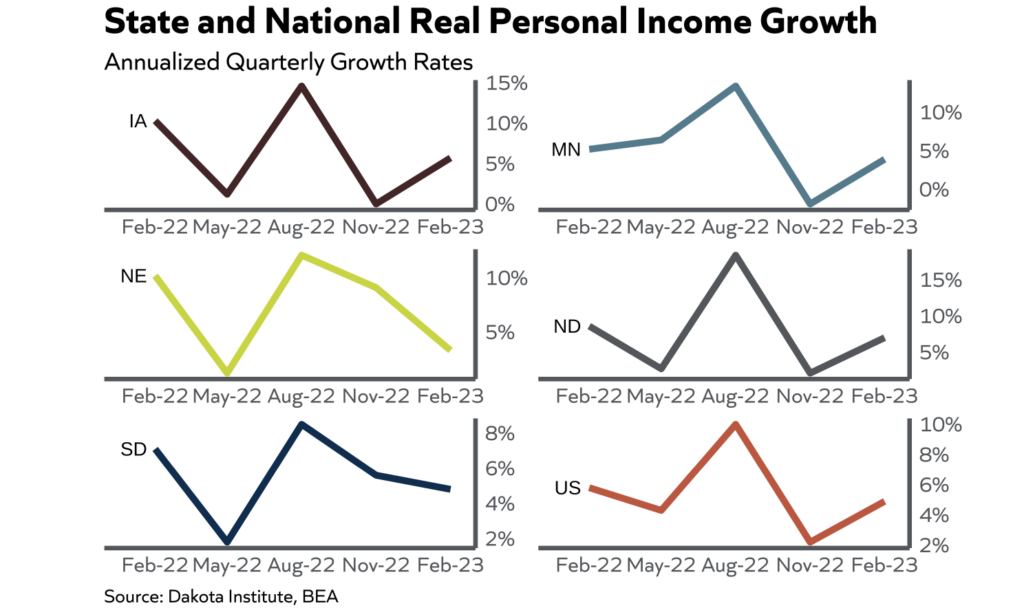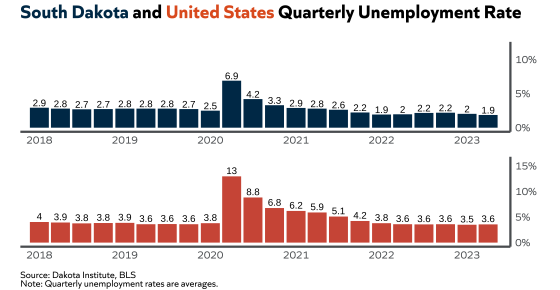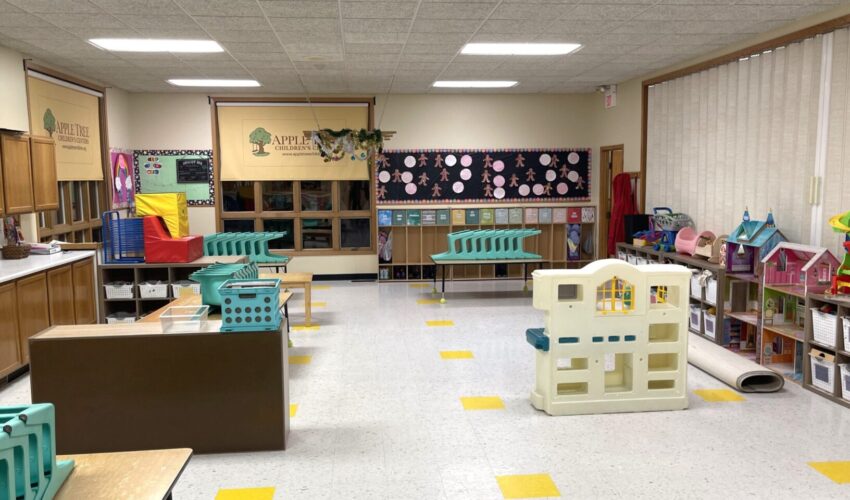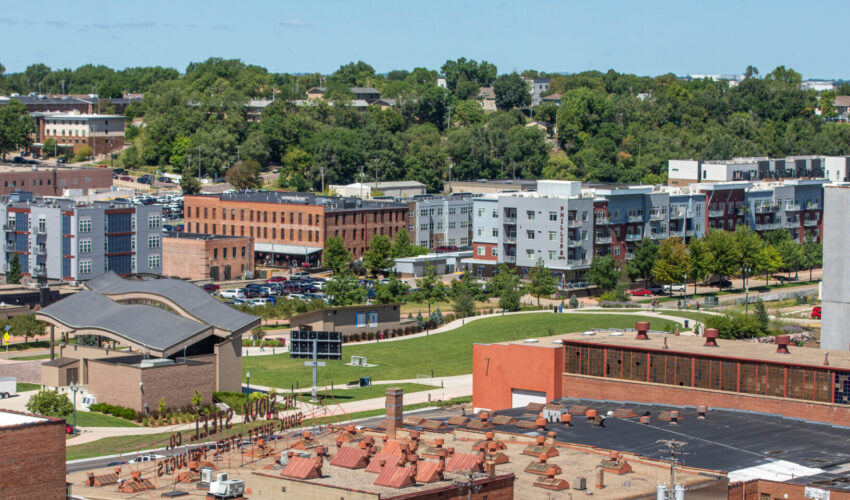Dakota Outlook: S.D. personal income, wages show growth, but inflation eats into it
Sept. 25, 2023
South Dakota posted annualized growth in the first quarter that was five times the national average, thanks largely to a rebound in the ag sector.
The state posted 10.1 percent annual growth in the first quarter compared with 2 percent for the U.S., which also grew at 2 percent in the second quarter, according to the Dakota Institute for Business and Economic Analysis.
“South Dakota’s second quarter numbers will almost certainly fall back to earth, but the steady employment growth and solid hiring numbers indicate growth will remain positive as long as the ag sector holds out,” executive director Jared McEntaffer wrote in the institute’s quarterly Dakota Outlook publication.
Dakota Institute is a nonprofit with a social entrepreneurship business model. Revenue from business consulting funds the operation and public benefits such as research and analysis.
The report was released this month and looks at the macroeconomy, wages and income, housing and the labor force.
Dakota Outlook raised its forecast for 2023 growth in South Dakota from 0.8 percent to 1.2 percent and adjusted its national forecast from 1.1 percent to 2 percent.
“We are watching out for disruptions in the commercial real estate sector and potential government shutdowns later this year. Either development would negatively impact growth, though the full effects would not be fully felt until 2024,” McEntaffer wrote. “The continuing moderation of inflation pressures helps to buoy our growth outlook as well.”
Overall inflation is falling, driven by the Federal Reserve’s actions, and Dakota Outlook forecasts that it will remain above 3 percent through the end of the year, though core inflation — CPI minus food and energy — is expected to remain above 4 percent.
Income, wage growth
The Dakota Institute for Business and Economic Analysis found personal income in the state grew 5.1 percent, adjusted for inflation, in the first quarter of this year compared with the same time a year ago.
That’s more than four times the national growth rate, but it reflected a sharp gain in farm earnings, which had dropped significantly at the end of 2022.
“Nonfarm earnings grew at about the same pace as the nation in the first quarter, but South Dakota had modest growth in the final quarter of 2022 while the nation experienced a decline of almost 2 percent,” Dakota Institute Fellow David Sorenson wrote in the report.
The strong growth in the first quarter led to an increase in per capita income to $65,870 in 2022 dollars, greater than the values in the prior two quarters but still below the state’s peak in 2021.
“South Dakota’s per capita personal income remains slightly higher than the U.S. value,” Sorenson wrote. “Forecasting through the end of 2023 given national real growth of about 1 percent relative to 2022 personal income, South Dakota income should grow about 2 percent, with an increase in per capita income of 1.5 percent.”
Average hourly earnings improved in the first half of 2023, and lowered inflation “meant that real earnings were not eroded as badly as they were in 2022,” Sorenson wrote.
Average hourly earnings in the private sector in South Dakota increased almost $1 between the end of 2022 and mid-2023, from $27.88 to $28.80.
After accounting for inflation, the increase was 3.3 percent, or 50 cents an hour.
“The year over year was a full percentage point higher than the national rate, while the December 2022 to June 2023 state rate was almost four times the national average earnings increase,” Sorenson wrote.
Sioux Falls grew at a slower rate than elsewhere around the state, though, while Rapid City continued a decline shown in 2022.
Housing market
Demand for housing remains strong despite increased borrowing costs, the Dakota Outlook report said.
“South Dakota’s housing market has displayed remarkable resilience, though there are some signs of a slowdown,” Dakota Institute Fellow Aaron Scholl wrote. “South Dakota has maintained substantial listing price growth, reflecting an impressive 7.3 percent increase from Q2 2022 to Q2 2023.”
Although buyers are challenged by rising mortgage rates, “continued price growth indicates robust buyer demand relative to supply across South Dakota,” Scholl wrote.
Dakota Outlook forecasts that mortgage rates will fall slightly by the end of the year to 6.65 percent.
Labor market
The labor market outlook “continues to defy gravity,” McEntaffer wrote. “The story continues to be strong employment growth, low unemployment and tight labor market conditions.”
South Dakota’s employment growth has outpaced the U.S. during the first two quarters of 2023,” but the gap has narrowed as employment growth slows,” he continued. “We anticipate national employment growth will surpass the state’s during the second half of the year, with both the state and nation ending the year with an average 2.4 percent employment growth year over year.”
South Dakota might be somewhat insulated by monetary policy considerations, “but we are potentially more constrained by a lack of worker availability,” McEntaffer added. “South Dakota’s unemployment rate in Q2 was an unhealthy 1.9 percent, down from a similarly unhealthy 2 percent in Q1. It may seem odd to hear hand-wringing about low unemployment, but the issues can be real.”

